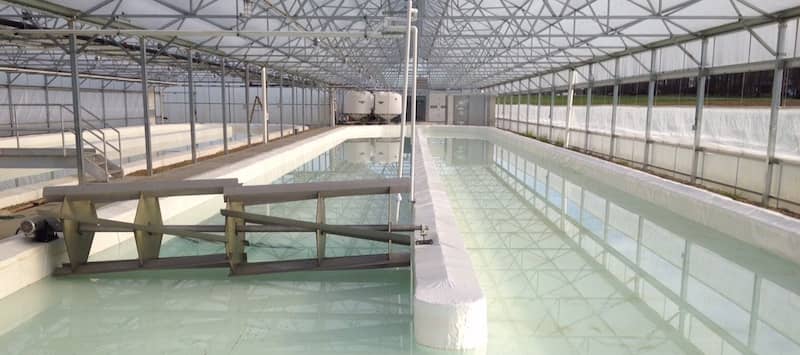 Aquaculture, also known as aquafarming, is defined as the cultivation of aquatic plants and animals in a variety of water environments. As the need for higher volumes of protein continues to increase, so too does the need for aquaculture ponds. For farmers there is another layer of complexity to consider; how to ensure that the plants and animals being harvested are healthy and disease free. This is where geomembranes can offer benefits to the aquaculture industry.
Aquaculture, also known as aquafarming, is defined as the cultivation of aquatic plants and animals in a variety of water environments. As the need for higher volumes of protein continues to increase, so too does the need for aquaculture ponds. For farmers there is another layer of complexity to consider; how to ensure that the plants and animals being harvested are healthy and disease free. This is where geomembranes can offer benefits to the aquaculture industry.
In unlined aquaculture ponds, inhabitants can be exposed to a myriad of diseases carried by the exposed soil. Depending on the location of the pond, these plants and animals can also potentially come in contact with a number of hydrocarbons or wastewater run-off. In two worst case scenarios, the contaminants can destroy the expected harvest or pass diseases to the individuals who are consuming the plants or animals.
Geomembrane lined ponds, thanks to the inherent properties and low permeation of the liner, help to mitigate and prevent the above scenarios from occurring, leading to healthier harvests. Healthier plants and animals result in bigger yields for farmers. Some other benefits of using geomembranes include:
- Flexible
- More economical
- Higher strength to weight ratio
When specifying reinforced geomembranes as a liner for aquaculture ponds, farmers receive an added bonus of UV protection and dimensional stability. Reinforced geomembranes are engineered to include UV inhibitors that will help preserve the performance of the geomembrane in the long run. Geomembranes that are white in color can also maintain the water in aquaculture ponds at least 30ºF cooler than the water in aquaculture ponds lined with a black geomembrane. As a result, the potential geographical footprint for aquaculture ponds is able to increase.
Finding an economical solution for aquaculture ponds is a considerable demand for owner/operators in the industry. While the term is relative, geomembranes provide long-term benefits that outweigh the initial cost of installation. Owners and operators should look for geomembranes that are chemical and UV resistant and also possess additives that will not hinder the growth of their crops and/or livestock.
What are other benefits of using geomembranes for aquaculture ponds? Share your thoughts in the comments.




